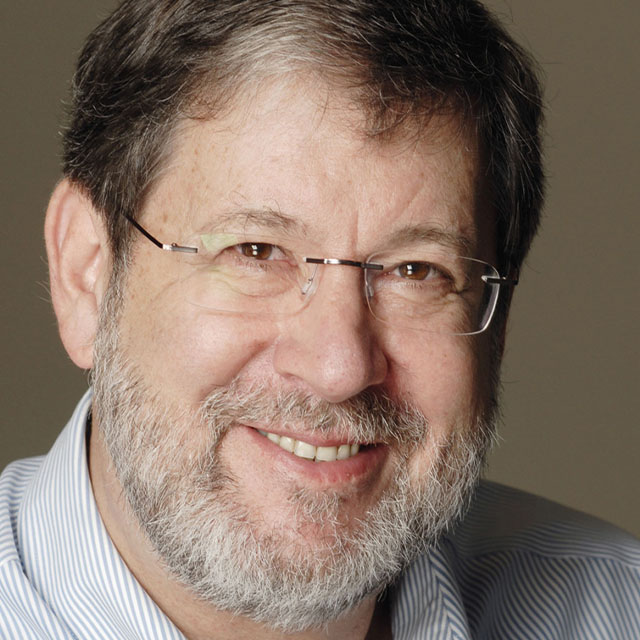History
IMB was officially established in January 2000 to capitalise on the genomic revolution. Researchers around the world were working on the draft sequence of the human genome, an effort that took over a decade and cost over two billion dollars. Today, we can sequence a genome in less than a day, for fewer than a thousand dollars.
In 2021, for IMB's 21st anniversary, we invited our three former Directors, Professors John Mattick AO, Peter Andrews AO, and Brandon Wainwright AM, to share their reflections on their time at the helm of Australia's #1 research institute.
Professor John Mattick AO, FAA, FTSE, Founding Co-Director of IMB (2000-2005)

It was an aspirational time: the turn of a new century, an ambitious political landscape, and a state primed to do things differently.
And the IMB, recalled Professor John Mattick, was emblematic of what a medium-sized city could achieve with strategically leveraged funding from state and federal governments and philanthropic partnerships.
“We started with excellence and we nurtured that culture,” said Professor Mattick.
“We recruited emerging superstars in science and promoted graduate research.
“We gave them their own laboratories and the freedom to pursue research that connected basic and applied science, chemistry and biology and, importantly, people with common interests and complementary expertise.
“As co-directors, Peter and I were keen to foster this youthful dynamic, to lead and support, not control,” Professor Mattick said.
The Institute was developed and run like a business. A phased approach secured funding first for the building then for operations, negotiating a financial runway with a ten-year plan for incremental funding increases and reviews every five years.
It was an ethos that permeated the Institute.
“It’s a privilege to be funded to follow your passion and dedicate your academic career to research, so you have to be the best.
“We encouraged and supported IMB researchers to seek out and apply for opportunities that would extend their discovery and collaboration experiences beyond the University.
“It was a loyalty–performance trade off that generated layers of value for the Institute and the careers of its staff and students,” Professor Mattick said.
From its very beginnings, the IMB disrupted conventional thinking about research innovation and outcomes. It was the model that set the standard for establishing other institutes, at UQ and elsewhere; a flagship not just for the University but for Brisbane’s burgeoning biotech industry.
Emeritus Professor Peter Andrews AO FTSE, Founding Co-Director of IMB (2000-2003)
‘From bricks to brains to business’ sums up the vision.
It would be a powerhouse unlike any other research centre in Queensland, one that would bring the brightest minds together and transform discoveries into commercial enterprises that boosted the state economy with global biotech investment and positioned Brisbane as the southern hemisphere’s hub for exciting life sciences activity.
This concept, conjured between two colleagues on a retreat in 1995, developed into a compelling business case for combining the complementary disciplines of chemistry and biology under one roof, with a focus on graduate development, science communication and entrepreneurship.
“To realise our vision and create knowledge-intensive businesses, John and I knew it was critical to attract and retain top research talent,” said Professor Andrews.
“Within ten years the IMB had contributed significantly to Queensland’s moving from the lowest number of scientists per capita in the country to the state with the highest.”
As the inaugural CEO of IMBCom, the Institute’s embedded commercialisation company, Professor Andrews created opportunities for researchers to forge relationships with industry and investors.
“It’s important for many researchers to go beyond the discovery phase and personally generate economic and societal value from their science.
“Involving them in the process of translating their ideas into products and techniques that actually diagnose and treat diseases helps them to design and attract substantial funding for future research projects.
“To hear and see their passion is also very appealing to investors and philanthropists,” Professor Andrews said.
With an impressive portfolio of globally connected spin out companies and its current researchers continuing to generate outstanding economic, societal and environmental benefits, the original concept of the IMB is being proven successful many times over.
Professor Brandon Wainwright AM, Director of IMB (2006-2019)
With a mandate to extend the momentum and mature the Institute, investing in people and partnerships was Professor Wainwright’s strategy as the IMB’s director from 2006 to 2019.
Risk, discovery and communication featured strongly throughout the tenure of this director who saw his role as knowing what every researcher was working on, to optimise the interdisciplinary collaborations that were now functioning fruitfully under one roof.
“We nurtured a culture that celebrated risk, one that supported standing on the dark edge of the unknown and stepping into where others were not game to go,” said Professor Wainwright.
“The IMB itself began as an untested concept, but soon we were attracting three times the national average in grants.
“Our point of difference was that we were not just another medical research centre.
“We were people who spoke diverse life science languages yet learned to understand each other’s drivers for solving problems differently.”
IMB people were chosen because they asked interesting questions. They had plans and were open to mentorship. They recognised discovery as the first stage of translational research. They sought knowledge that had not yet been imagined.
Professor Wainwright encouraged IMB researchers to develop multiple skillsets for communicating with the people in government, industry and community organisations who could take their discoveries further.
“I imparted something I had learned early in my career and that was to help stakeholders understand what you’re doing so they can help others understand why you need the support to achieve it,” Professor Wainwright explained.
Discerning what people wanted from each partnership meant the IMB could attract the resources to pursue signature projects.
“It was never about the pixels, it was always about the big picture.
“To see what’s beyond the next horizon, you have to stand tall and stand at the edge."
